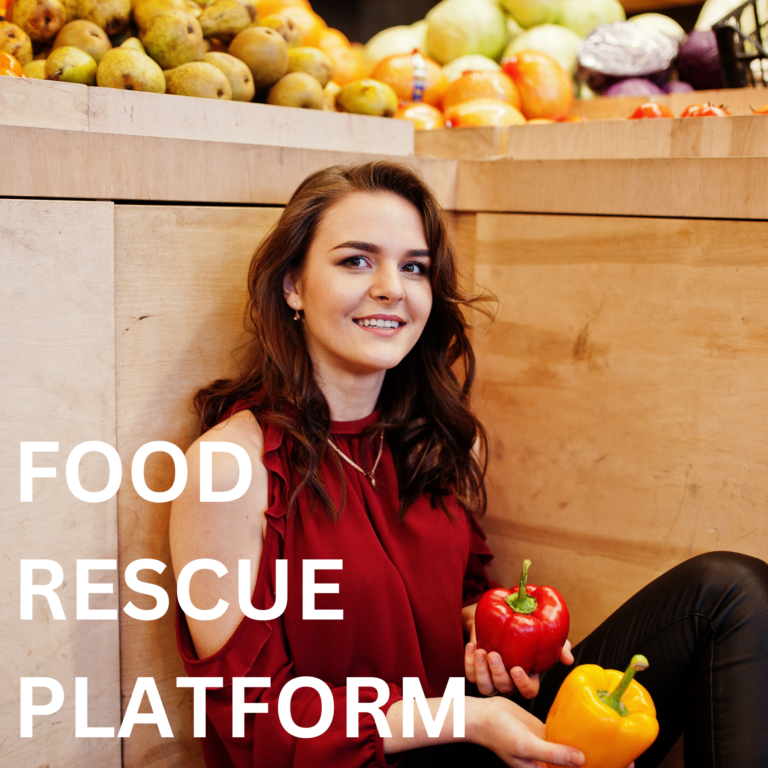Food waste is a significant global issue, with millions of tons of edible food discarded every year. Restaurants, bakeries, and supermarkets often throw away perfectly good food due to overproduction or unsold inventory. A food rescue platform offers an innovative solution by connecting restaurants with consumers who are willing to buy surplus food at discounted prices. This concept not only reduces food waste but also creates a profitable business opportunity while supporting sustainability initiatives.
In this article, we will explore how to create a food rescue platform for restaurants, including the business model, monetization strategies, technical requirements, marketing tactics, and potential earnings.
Why a Food Rescue Platform is a Great Business Idea
1. High Demand for Affordable Food
- Many consumers look for budget-friendly meals, and discounted restaurant food is an attractive option.
- The rising awareness of sustainability and zero-waste living encourages consumers to support food rescue initiatives.
2. Benefits for Restaurants
- Minimizing financial losses from unsold food.
- Attracting new customers who may become regular patrons.
- Strengthening brand reputation by promoting eco-friendly initiatives.
3. Environmental and Social Impact
- Reducing food waste and carbon emissions.
- Helping to alleviate food insecurity by making meals more accessible.
- Supporting local economies by enabling businesses to earn additional revenue from surplus stock.
How a Food Rescue Platform Works
A food rescue platform operates as an app or website where restaurants list surplus food at reduced prices. Consumers browse available deals, place an order, and pick up the food from participating venues.
Step-by-Step Process
- Restaurants Sign Up – Businesses register and list their surplus food.
- Consumers Browse & Purchase – Users see available discounted meals and make a purchase via the platform.
- Restaurant Prepares Order – The food is packed and made available for pick-up.
- Customer Collects the Food – Customers arrive at the restaurant to pick up their order.
- Platform Processes Payments – Revenue is split between the restaurant and the platform, with a small service fee deducted.
Key Features of a Successful Food Rescue Platform
To ensure usability and scalability, the platform should have the following key features:
1. User-Friendly Mobile App & Website
- Restaurant dashboard to manage food listings and pricing.
- Consumer interface for browsing available meals.
- Real-time inventory tracking to prevent overselling.
2. Geolocation & Search Filters
- Allow users to find nearby restaurants with available surplus food.
- Search filters for cuisine type, dietary preferences, and pickup times.
3. Secure Payment System
- Integrated payment gateways (PayPal, Stripe, Apple Pay, Google Pay, credit/debit cards).
- Transparent pricing breakdown for consumers and businesses.
4. Review & Rating System
- Consumers can leave reviews to build trust and credibility.
- Restaurants with high ratings gain more visibility.
5. Push Notifications & Reminders
- Alerts for new discounted food deals.
- Pickup reminders to prevent food from being wasted.
6. Loyalty & Referral Programs
- Reward repeat customers with discounts or bonus points.
- Incentives for users who refer new customers or businesses.
Monetization Strategies: How to Earn Revenue
A food rescue platform generates revenue through various streams:
1. Commission on Each Sale
- The platform takes 10-20% commission per transaction.
- Example: If a meal costs $5, the platform earns $0.50-$1.00.
2. Subscription Model for Restaurants
- Offer premium plans with additional features (e.g., priority listing, analytics, marketing tools).
- Monthly subscription fee: $20-$100 per restaurant.
3. Sponsored Listings & Advertising
- Restaurants can pay for featured listings to appear on top of search results.
- Display ads for food-related brands (e.g., eco-friendly packaging companies).
4. Delivery Fee (Optional Expansion)
- Partner with couriers to offer doorstep delivery for an additional charge.
- Take a service fee per delivery order.
5. CSR Partnerships & Donations
- Collaborate with non-profits that sponsor meals for people in need.
- Restaurants can donate unsold food, and the platform earns corporate social responsibility (CSR) sponsorships.
Potential Earnings and Profitability
The earnings potential depends on the number of restaurants and daily transactions. Here’s a revenue projection:
| Restaurants on Platform | Avg. Sales per Day | Platform Fee (15%) | Monthly Revenue |
|---|---|---|---|
| 100 | 10 orders x $5 | $0.75 per order | $22,500 |
| 500 | 20 orders x $5 | $0.75 per order | $150,000 |
| 1,000 | 30 orders x $5 | $0.75 per order | $450,000 |
Other revenue streams (ads, premium plans, delivery fees) can further boost earnings.
Marketing Strategies to Attract Users
1. SEO & Content Marketing
- Blog posts on food waste reduction, sustainability, and eco-friendly living.
- Targeted keywords: “cheap meals near me”, “food rescue app”, “discounted restaurant food”.
2. Social Media & Influencer Collaborations
- Partner with food bloggers, zero-waste activists, and restaurant influencers.
- Run targeted ads on Facebook, Instagram, and TikTok.
- Encourage user-generated content with hashtags (e.g., #SaveTheFood).
3. Referral & Loyalty Programs
- Offer discounts for first-time users.
- Reward customers for referring friends and restaurants.
4. Direct Sales to Restaurants
- Cold outreach to local restaurants, cafes, and bakeries.
- Offer a free trial to get them onboard.
5. PR & Partnerships with Environmental Organizations
- Collaborate with zero-waste groups, food banks, and sustainability initiatives.
- Get featured in news articles and food magazines.
Challenges & How to Overcome Them
1. Convincing Restaurants to Join
- Highlight cost savings & extra revenue potential.
- Provide case studies of successful food rescue businesses.
2. Managing Logistics & User Expectations
- Ensure restaurants update listings in real-time.
- Implement clear pickup guidelines to avoid miscommunication.
3. Competition from Similar Platforms
- Offer unique features (e.g., exclusive deals, AI-based food suggestions).
- Focus on hyperlocal marketing strategies.
Conclusion: Why You Should Start a Food Rescue Platform
Launching a food rescue platform is not just a profitable business opportunity—it’s also a powerful sustainability initiative. With the right technology, marketing strategies, and restaurant partnerships, you can build a successful platform that reduces food waste while generating consistent revenue.
If you’re passionate about food sustainability and innovative tech solutions, now is the perfect time to create a food rescue business that makes a real impact!



